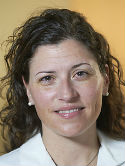| Abstract: |
Background: In breast-conserving surgery (BCS), the method of margin assessment and the definition of a negative margin vary widely. The purpose of this study was to compare the incidence of positive margins and rates of reexcision between two methods of margin assessment at a single institution. Study design: In July 2004, our protocol for margin evaluation changed from perpendicular inked margins (Group A, n = 263) to tangential shaved margins (Group B, n = 261). In Group A, margins were classified as positive, close, and negative. Margins designated as "close" were further defined as: ≤ 1 mm, ≤ 2 mm, and ≤ 3 mm. In Group B, shaved margins (by definition 2 to 3 mm) were reported as positive or negative. Results: The rate of reported "positive" margins was significantly higher in Group B: 127 of 261 (49%) versus 42 of 263 (16%), p < 0.001. But when patients with "positive, close, or both" kinds of margins were combined in Group A, there was no significant difference between the two techniques. Although the shaved margin was 2- to 3-mm thick, the rate of reexcision in Group B was significantly higher when compared with that in patients with "positive, close, or both" ≤ 3 mm margins in Group A (75% versus 52%, p < 0.001). The likelihood of finding residual disease remained the same (27% versus 32%, p = NS). Conclusions: The tangential shaved-margin technique results in a higher proportion of reported positive margins and limits the ability of the surgeon to discriminate among patients with close margins, resulting in a higher rate of reexcision. The fact that many, but not all, patients with positive or close margins in both groups underwent reexcision emphasizes the role of surgical judgment in this setting. Longer followup is required to determine equivalency in rates of local recurrence between these two methods of margin assessment. © 2007 American College of Surgeons. |







